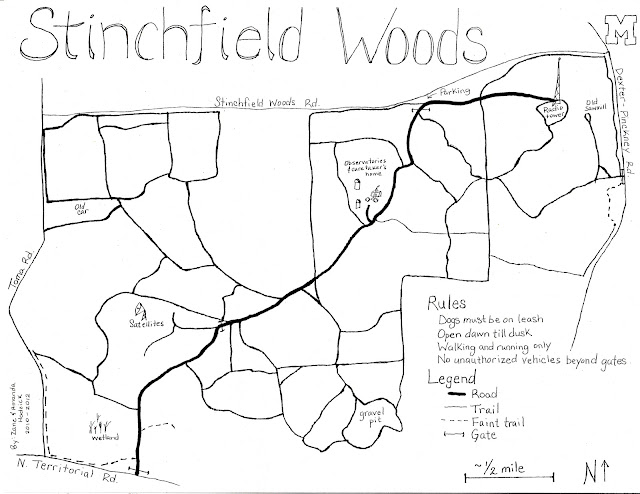Garlic Mustard (Alliaria petiolata) is an exotic invasive plant from Europe that has found its way into Stinchfield and has established itself as a pesky weed. Garlic Mustard invades woodlands, particularly disturbed areas such as along trails and roadways. Many people consider Garlic Mustard to be "Public Enemy #1" because it has been found to negatively impact forest health and threatens the blooming of spring flowers; plus, it is extremely hard to get rid of. Thanks to dedicated and thoughtful Stinchfield regulars (like Tony!) lots of Garlic Mustard is plucked yearly which is helping to prevent the continued spread of this invasive species. You may have noticed some uprooted green plants strew onto the trails-- most likely you see Garlic Mustard (or another invasive) that someone pulled out and threw into the middle of the trail so that it won't re-root
This is what Garlic Mustard looks like at this time of year (Mid-June). It can be quite tall and it is beginning to senesce (meaning reach maturity and turn brown)
Someone plucked 10 garbage bags full of Garlic Mustard from the road going up to the radio tower.
You will also see piles of Garlic Mustard thrown to the sides of trails.









